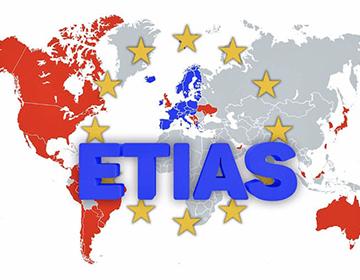ETIAS Spain: What Travelers Need to Know Before Visiting
As European travel gears up for the post-pandemic era, Spain is set to implement the European Travel Information and Authorization System (ETIAS), a new mandatory pre-travel authorization for visitors from visa-exempt countries. Slated to enhance security and streamline border crossings, ETIAS will require travelers to submit applications online before entering Spain. This development marks a significant shift in the travel landscape, impacting millions of tourists eager to explore Spain’s rich cultural heritage and vibrant destinations. In this article, we break down what ETIAS means for travelers, the application process, and how it will shape tourism in Spain moving forward.
Understanding ETIAS Requirements for Travelers Visiting Spain
Travelers planning to visit Spain must navigate the new ETIAS (European Travel Information and Authorization System) entry requirements set to enhance security across the Schengen Area. This system mandates that visitors from visa-exempt countries obtain an electronic travel authorization prior to arrival. The application process is quick and fully online, designed to screen travelers against security databases before granting access. Key data such as passport details, travel itinerary, and background questions related to health or criminal records are required to complete the form. Approval is typically granted within minutes, allowing for a smooth transition at border control points.
Understanding the specifics of ETIAS is crucial for a hassle-free journey to Spain. Essential points include:
- Eligibility: Citizens from over 60 visa-exempt countries must apply.
- Validity: Authorization lasts for up to 3 years or until passport expiry.
- Cost: A nominal fee applies per application.
- Travel time: Permits stays of up to 90 days within any 180-day period.
Below is a quick reference table summarizing ETIAS key travel data:
| Feature | Details |
|---|---|
| Application Mode | Online only |
| Processing Time | Usually minutes |
| Fee | €7 (for travelers aged 18-70) |
| Validity Duration | 3 years or until passport expires |
| Maximum Stay | 90 days per 180 days |
Navigating the ETIAS Application Process Efficiently
Completing the ETIAS application doesn’t have to be a cumbersome task. To ensure a swift process, travelers should prepare all necessary documents beforehand, including a valid passport, travel itinerary, and emergency contact information. The online form is designed for clarity, but attention to detail is crucial-simple errors can lead to delays or denials. Submitting the application at least 72 hours before your planned departure is recommended, allowing enough time for automated security checks and any manual reviews by authorities.
Key tips to streamline your ETIAS application:
- Use a desktop or laptop for better access to required document uploads.
- Keep answers precise and consistent with your official documents.
- Save a copy of your submitted application and confirmation page for reference.
- Monitor your email for any follow-up requests after submission.
| Step | Average Time | Tips |
|---|---|---|
| Form Completion | 15 minutes | Have documents ready |
| Automated Security Check | Minutes | Submit early |
| Manual Review (if needed) | Up to 3 days | Check email regularly |
Top Tips for a Smooth Entry Under Spain’s New ETIAS Regulations
To ensure your travel plans to Spain go off without a hitch under the new ETIAS regulations, preparation is key. Start by applying for your ETIAS authorization well in advance-ideally at least 72 hours before your intended departure. Keep in mind that while most applications are approved quickly, delays can occur during peak travel seasons or due to additional security checks. Make sure your digital passport information is accurate and matches the details entered in your ETIAS application to avoid discrepancies at the border.
Moreover, travelers should be aware of several crucial points to streamline their entry process:
- Carry a printed or digital copy of your ETIAS approval alongside your passport.
- Check the validity period of your ETIAS authorization; it typically lasts up to 3 years or until your passport expires.
- Have proof of onward travel and accommodation ready, as these may be requested by border officials.
- Stay updated on any changes in Spain’s entry requirements in case of sudden regulatory adjustments.
| Tip | Why It Matters | |||||||
|---|---|---|---|---|---|---|---|---|
| Early Application | Avoid last-minute stress and possible travel disruptions. | |||||||
| Accurate Information | Ensures your ETIAS matches official records for smooth processing. | |||||||
| Valid Documentation | Essential for border control It looks like the last table row is incomplete. Here’s a clean, complete version of the entire section with a properly finished last row in the table:
“`html To ensure your travel plans to Spain go off without a hitch under the new ETIAS regulations, preparation is key. Start by applying for your ETIAS authorization well in advance-ideally at least 72 hours before your intended departure. Keep in mind that while most applications are approved quickly, delays can occur during peak travel seasons or due to additional security checks. Make sure your digital passport information is accurate and matches the details entered in your ETIAS application to avoid discrepancies at the border. Moreover, travelers should be aware of several crucial points to streamline their entry process:
|




